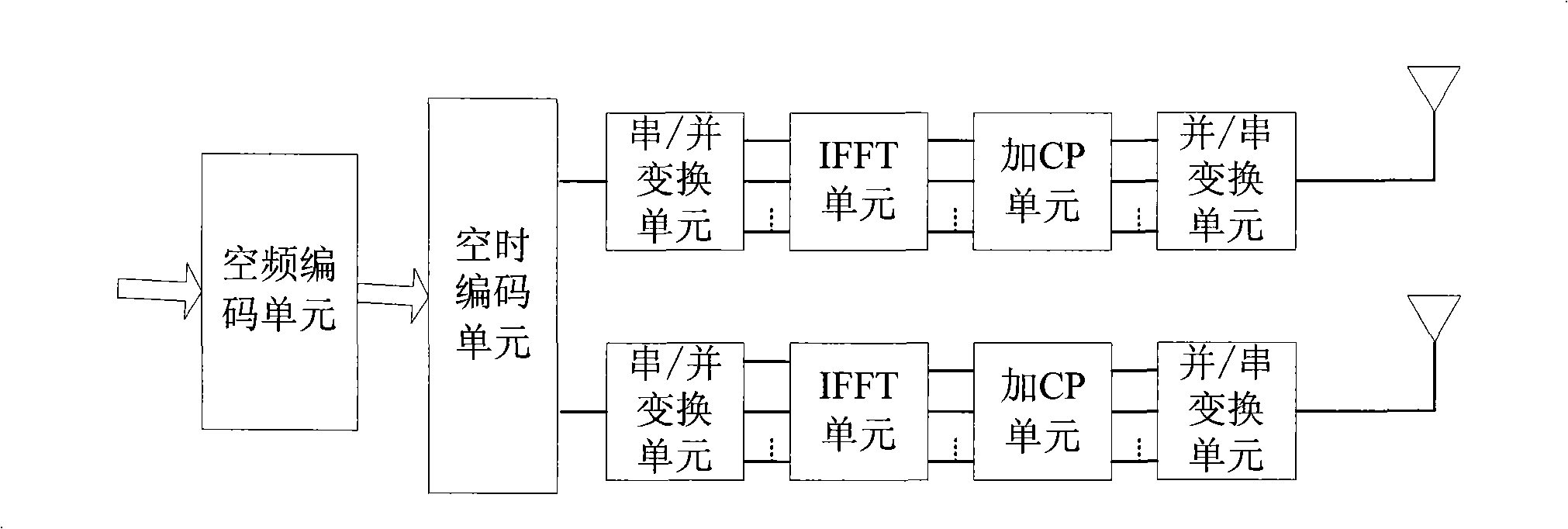Multi-input multi-output orthogonal frequency division multiplexing system transmission method and transceiver
An orthogonal frequency division and multiple output technology, applied in multi-frequency code system, diversity/multi-antenna system, preventing/detecting errors through diversity reception, etc., can solve the problem of effectively suppressing inter-group interference and multi-user interference, There are no problems such as a good coding gain optimization method to achieve the effect of simple structure and simple calculation
- Summary
- Abstract
- Description
- Claims
- Application Information
AI Technical Summary
Problems solved by technology
Method used
Image
Examples
Embodiment Construction
[0044] The present invention will be described below in conjunction with the accompanying drawings and specific embodiments, but not as a limitation of the present invention.
[0045] The purpose of the present invention is to adjust the structure of the transceiver to obtain a highly efficient transceiver and a corresponding transmission method suitable for a MIMO OFDM system using space-time-frequency coding without increasing the complexity of the transceiver. The core idea is that the transmitting end uses SFBC and STBC jointly, and the receiving end performs space-time decoding and space-frequency decoding respectively in two consecutive symbol periods. Compared with the traditional method, the method of the invention can simultaneously obtain the second-order space and second-order time diversity gains, and the encoding and decoding processes are all based on linear processing, and the calculation is simple.
[0046] The method applicable to the MIMO OFDM system provided...
PUM
 Login to View More
Login to View More Abstract
Description
Claims
Application Information
 Login to View More
Login to View More - R&D
- Intellectual Property
- Life Sciences
- Materials
- Tech Scout
- Unparalleled Data Quality
- Higher Quality Content
- 60% Fewer Hallucinations
Browse by: Latest US Patents, China's latest patents, Technical Efficacy Thesaurus, Application Domain, Technology Topic, Popular Technical Reports.
© 2025 PatSnap. All rights reserved.Legal|Privacy policy|Modern Slavery Act Transparency Statement|Sitemap|About US| Contact US: help@patsnap.com



